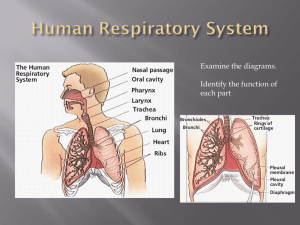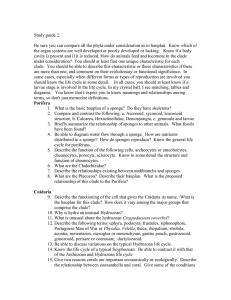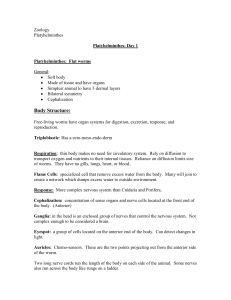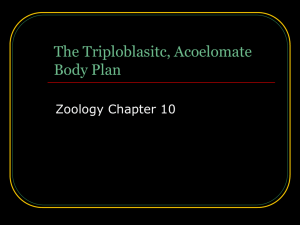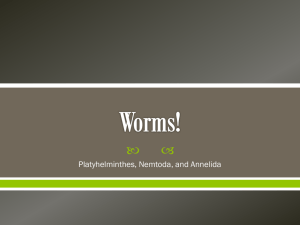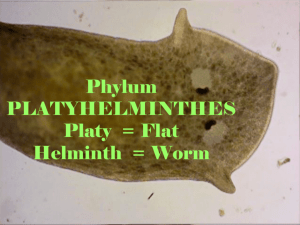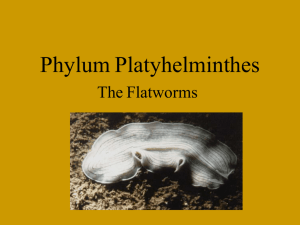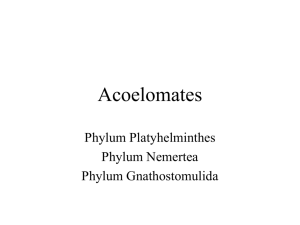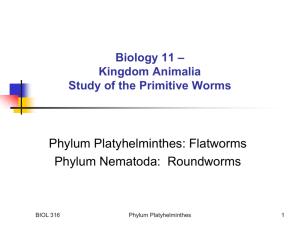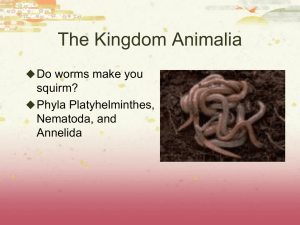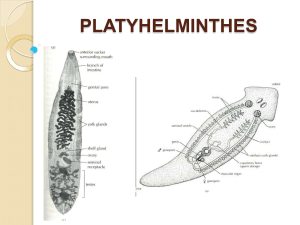Study guide B
advertisement
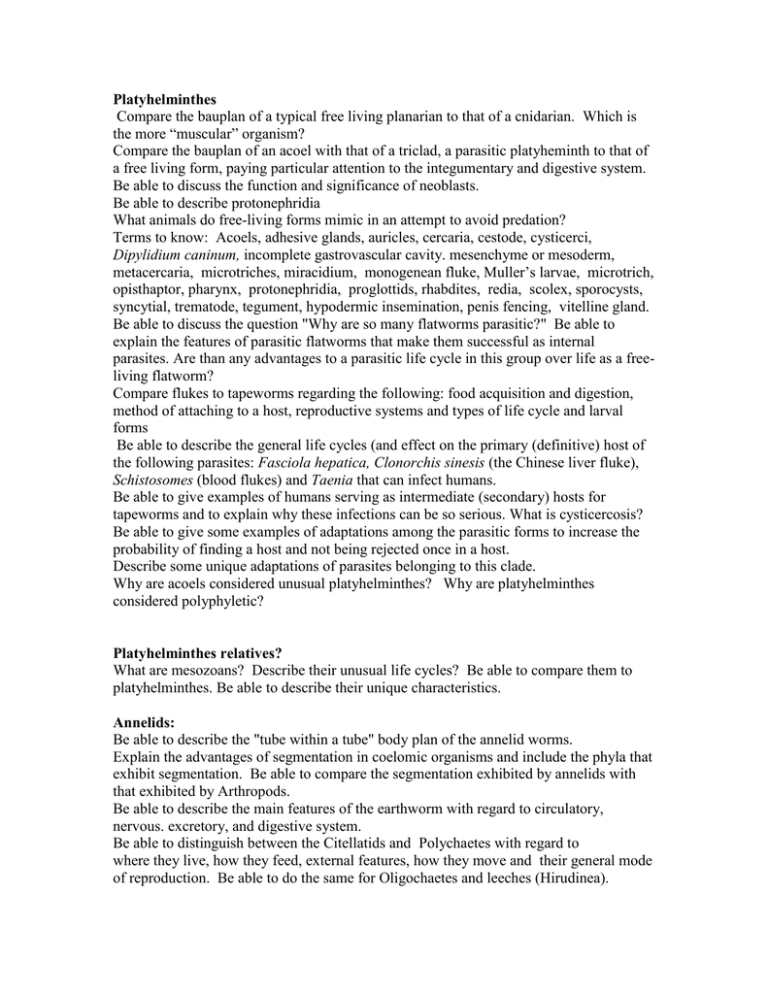
Platyhelminthes Compare the bauplan of a typical free living planarian to that of a cnidarian. Which is the more “muscular” organism? Compare the bauplan of an acoel with that of a triclad, a parasitic platyheminth to that of a free living form, paying particular attention to the integumentary and digestive system. Be able to discuss the function and significance of neoblasts. Be able to describe protonephridia What animals do free-living forms mimic in an attempt to avoid predation? Terms to know: Acoels, adhesive glands, auricles, cercaria, cestode, cysticerci, Dipylidium caninum, incomplete gastrovascular cavity. mesenchyme or mesoderm, metacercaria, microtriches, miracidium, monogenean fluke, Muller’s larvae, microtrich, opisthaptor, pharynx, protonephridia, proglottids, rhabdites, redia, scolex, sporocysts, syncytial, trematode, tegument, hypodermic insemination, penis fencing, vitelline gland. Be able to discuss the question "Why are so many flatworms parasitic?" Be able to explain the features of parasitic flatworms that make them successful as internal parasites. Are than any advantages to a parasitic life cycle in this group over life as a freeliving flatworm? Compare flukes to tapeworms regarding the following: food acquisition and digestion, method of attaching to a host, reproductive systems and types of life cycle and larval forms Be able to describe the general life cycles (and effect on the primary (definitive) host of the following parasites: Fasciola hepatica, Clonorchis sinesis (the Chinese liver fluke), Schistosomes (blood flukes) and Taenia that can infect humans. Be able to give examples of humans serving as intermediate (secondary) hosts for tapeworms and to explain why these infections can be so serious. What is cysticercosis? Be able to give some examples of adaptations among the parasitic forms to increase the probability of finding a host and not being rejected once in a host. Describe some unique adaptations of parasites belonging to this clade. Why are acoels considered unusual platyhelminthes? Why are platyhelminthes considered polyphyletic? Platyhelminthes relatives? What are mesozoans? Describe their unusual life cycles? Be able to compare them to platyhelminthes. Be able to describe their unique characteristics. Annelids: Be able to describe the "tube within a tube" body plan of the annelid worms. Explain the advantages of segmentation in coelomic organisms and include the phyla that exhibit segmentation. Be able to compare the segmentation exhibited by annelids with that exhibited by Arthropods. Be able to describe the main features of the earthworm with regard to circulatory, nervous. excretory, and digestive system. Be able to distinguish between the Citellatids and Polychaetes with regard to where they live, how they feed, external features, how they move and their general mode of reproduction. Be able to do the same for Oligochaetes and leeches (Hirudinea). How are leeches being used today as medical “devices”? Describe the habitat and morphology of bone devouring worms. What is Chaetopterus pugaporcinus? Be able to recognize diagrams of Echiurans and Sipunculids. Be able to describe the basic bauplan and lifestyles of these groups. What characteristics do Echiurids and Spunculids share with typical annelids. Why are they not thought by some to be closely related to annelids? What is unusual about the clade Siboglinidae’s (Pogonophora) lifestyle? Give example of adaptations for living at 2,6000 meters below the surface. Nemertea Be able to characterize the Nemertea. Be able to compare them to Platyhelminthes and Annelids. Describe their unique probosis. Describe a pilidium larvae and its imaginal disks. If you were had to pick a near relative for ribbon worms, would it be flatworms or annelid worms? Defend your answer
